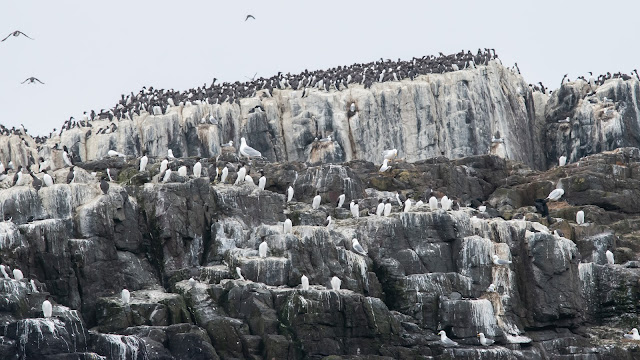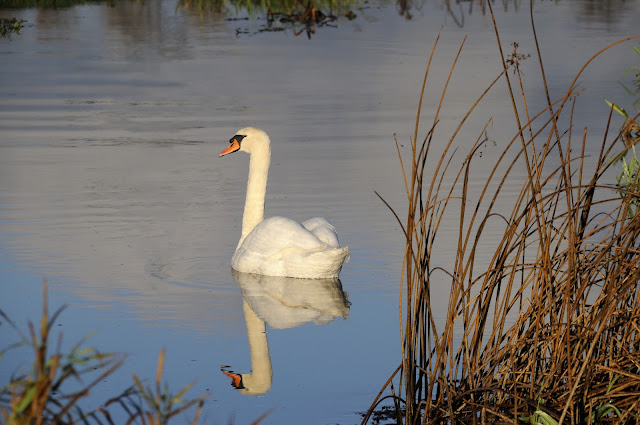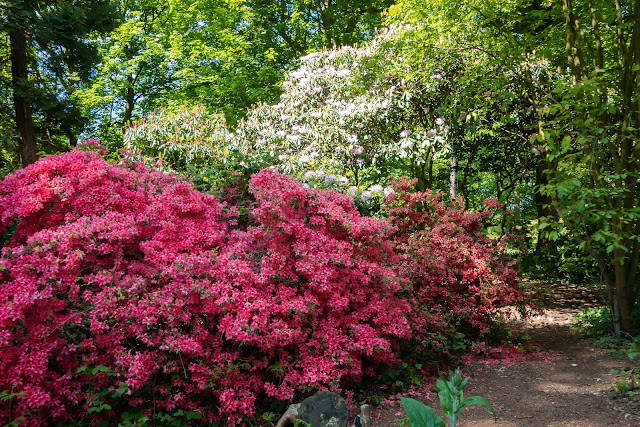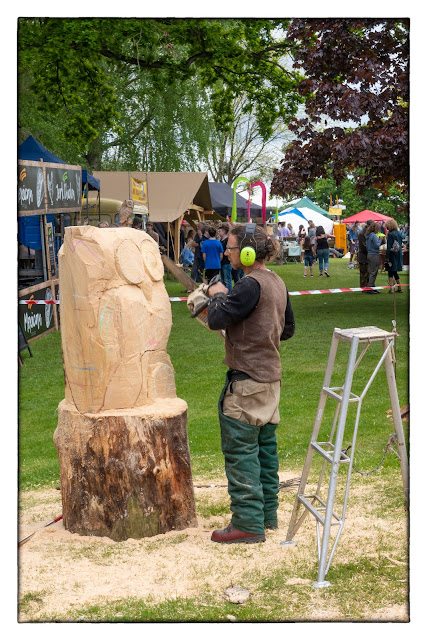In the afternoon of 10th June, we had booked a trip to Inner Farne, home of a multitude of seabirds - one of the best locations in the British Isles. This time of year, most breeds are plentiful, as they are busy raising young. So, blessing the calm day, we made our way to Seahouses, our point of embarking.
The trip visits some of the outer islands, just for a brief look. This was interesting as we skirted the island housing the lighthouse from where Grace Darling and her father made their heroic rescue. Then passed large numbers of gray seals lazily watching us sail past. Finally, we landed on inner Farne to be dive bombed by Terns who were nesting near the landing point.
Guillemot covering the rocks as we approached by the island.
Longstone Lighthouse - our closest approach. Some trips actually land - but not ours.
Grace Darling became a national heroine after risking her life to save the stranded survivors of the wrecked steamship Forfarshire in 1838. A good site to see the story of the heroic Grace Darling who lived here with her father, the lighthouse keeper. https://rnli.org/about-us/our-history/timeline/1838-grace-darling
Gray seals
The remains of St Cuthbert's Chapel and Terns galore!
The chapel on Inner Farne was once part of a larger monastic complex including the present visitor centre - once itself a chapel - and the surrounding courtyards. It was built in the early fourteenth century and was used by the holy community up until the Henry VIII's Dissolution. It was heavily renovated to its present state in the nineteenth century.
The first monastic buildings on Inner Farne are no longer visible. They were built by Aidan and then Cuthbert, and the passage of time coupled with the weather has removed all sign of these structures. The Venerable Bede, in his Life of St Cuthbert, does though give us some clues as to the nature of these early buildings. Cuthbert's cell, the building that Aidan had first built, was of stone and turf and stood - according to Bede - 'higher than a man'. Another larger structure, a guest house or 'hospitum' probably stood on the site of the present Fish House.
It wasn't until 1370 that we know the present Chapel was in existence, as the building of a new chapel on the site of a previous building is recorded as having begun in 1369, at a cost of £50. The presence of slightly older stone in parts of the north wall suggests an earlier building on the site so at least some of that has been incorporated into the later building. The monks of the House of Farne were wealthy enough to build such structures; they cultivated crops and even had livestock on some of the other islands. Seals were also a valuable commodity as they were classed as creatures of the sea, and so could be eaten on Fridays.
Arctic Tern
They do indeed `dive-bomb` you if they think you are too close, as I found out. Luckily I had a cap on, as advised!
Guillemot
Kittiwake
Razorbill telling me to go away! This with a telephoto so I wasn't too close anyway.
And then of course the Puffin. Running the gauntlet of the huge gulls who waited near the Puffin burrow to grab their catch before they could deliver it to their young. We did see many a Puffin get away down their burrows, although it was quite a battle.
Shag
Shag with young. Amazing how so many species of bird nest and raise young so close to other species.
Puffins galore
Baby rabbit near a burrow. His or a Puffins?
Young Gull
Goodby to the Inner Farne - our last view as we sailed back to Seahouses at the end of an amazing afternoon. A definite `must do` if in the area!
The Rescue in Seahouses
Dynamic statue, presented to the Parish of North Sunderland and Seahouses by Countrylife Homes and Seafield Caravan Park.































































